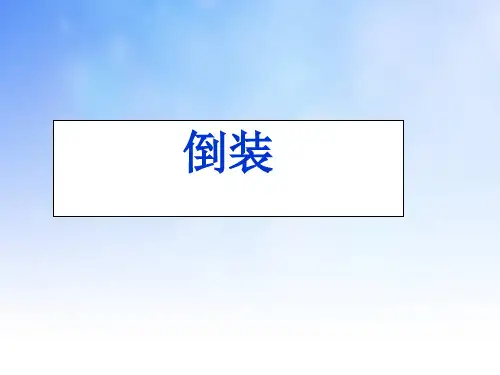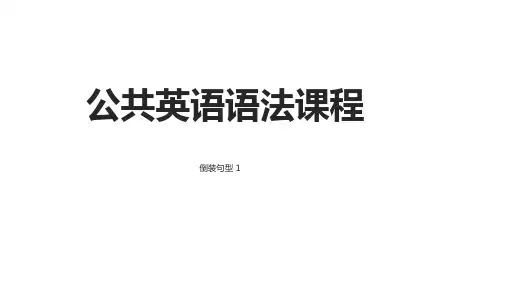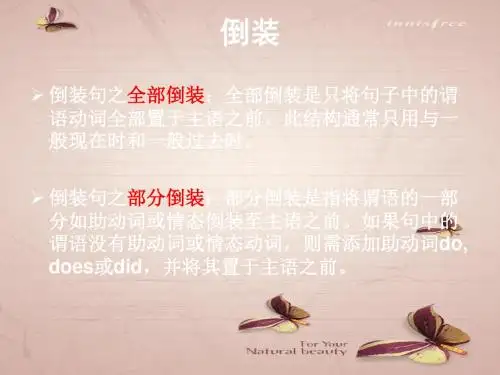1) 完全倒装即把整个谓语放到主语之前(是整个谓语动词, 而非助动词)。
• In came the teacher and the class began. 2) there引出的完全倒装句:除了最常见的there be句型以外,
there还可以接appear, exist, lie, remain, seem to be, stand等,一般都译成“有”的含义,构成完全倒装句。 • There live(stand,appear.seem,remain,exist….) • There once lived an old man in that house.
retreat could they. • She never laughed, nor did she ever lose her temper. 2) 用在肯定句里,构成一般否定倒装: • All that is true, nor must we forget it. (那全都是真的,我们可不能忘记。)
(中国典型的是相声表演,两个喜剧演员通过文字游戏逗 乐观众.)
2.部分倒装
1) 部分倒装即只把谓语的一部分(如助动词、情态
动词等)放到主语前,或把句子的强调成分提前。
• Nor did he let the disease stop him from living the kind of life he has always dreamt about.
2) 以否定词开头的句子要求部分倒装。注意下列句 子中助动词或情态动词提前、甚至补充助动词的 用法:
• Not until yesterday did little John change his mind.
• In no country other than Britain, it had been said, can one experience four seasons in the course of a single day.





